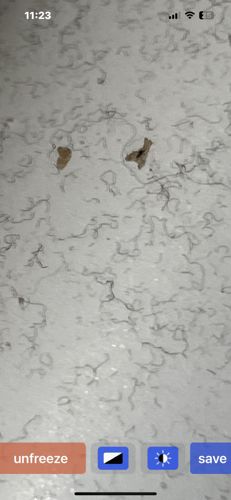Nematode (Roundworm)
Scientific Name: Nematoda (Phylum)
Order & Family: Phylum Nematoda (no specific order/family can be determined from the image as they are highly diverse)
Size: Most free-living nematodes are microscopic, typically 0.5 to 3 mm in length, though some parasitic species can be much larger, reaching several centimeters or even meters in length.

Natural Habitat
Nematodes are ubiquitous, found in almost every habitat on Earth. They are abundant in soil and marine sediments, fresh water, and are also found as parasites in plants, animals, and humans.
Diet & Feeding
Diet varies greatly depending on the species. Free-living nematodes can be bacterivores (feeding on bacteria), fungivores (feeding on fungi), predators (feeding on other small invertebrates), or omnivores. Plant-parasitic nematodes feed on plant cells, and animal-parasitic nematodes feed on host tissues or fluids.
Behavior Patterns
Nematodes move in a characteristic undulating or thrashing motion. Many species are free-living in soil or water, while others are parasitic. Their behavior is often dictated by their specific ecological role, e.g., root-knot nematodes induce gall formation on plant roots.
Risks & Benefits
Many nematodes are beneficial, playing crucial roles in nutrient cycling in soil ecosystems, controlling pest insects (e.g., entomopathogenic nematodes), and decomposing organic matter. However, some are significant pests in agriculture (plant-parasitic nematodes causing crop damage) and medicine (animal-parasitic nematodes like hookworms, pinworms, and filarial worms causing various diseases in humans and animals).
Identified on: 8/31/2025